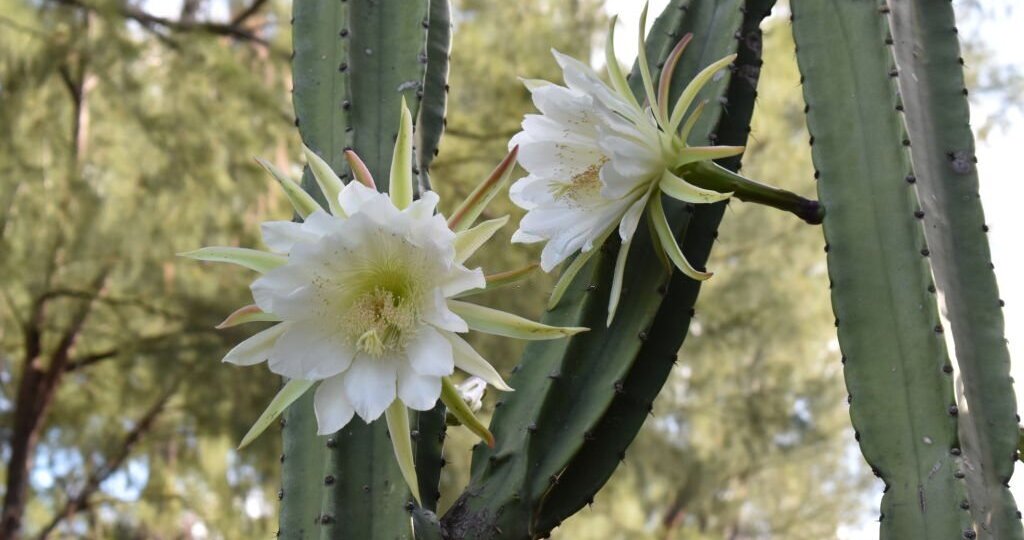San Pedro Ceremony is a traditional spiritual practice that has been performed by indigenous communities in the Andean region for thousands of years. This ceremony involves the use of the San Pedro cactus, also known as Huachuma, which is believed to have powerful healing and transformative properties.
The Origins of the San Pedro Ceremony

The San Pedro Ceremony has its roots in ancient Andean traditions. There is evidence that the cactus has been used for spiritual purposes in the Andean region since at least 200 BCE, and possibly much earlier. The ceremony has been passed down through generations and remains an important part of the culture of indigenous communities in the Andes.
Ancient Andean Traditions
The San Pedro Ceremony is deeply intertwined with the Andean worldview and philosophy. According to the Andean cosmology, everything in the universe is connected and has a spirit. The San Pedro cactus is seen as a powerful spirit ally that can help connect humans with the spirit world.
The Andean people believe that the San Pedro cactus has a divine spirit that can communicate with humans and provide guidance. The cactus is seen as a teacher and a guide, offering wisdom and insight to those who seek it. The ceremony is a way to connect with this spirit and receive its teachings.
The Andean people have a deep respect for nature and believe that everything in the natural world has a spirit. They see themselves as part of a larger ecosystem and believe that all beings are interconnected. The San Pedro Ceremony is a way to connect with the natural world and honor the spirits that inhabit it.
The Role of the Shaman
The San Pedro Ceremony is typically facilitated by a shaman or spiritual guide who has been trained in the ancient traditions.
- The role of the shaman is to lead the ceremony, provide guidance and support, and help participants navigate the transformative experience.
- Shamans are highly respected members of Andean communities and are believed to have a special connection with the spirit world.
- They are trained in the use of medicinal plants and are skilled at navigating altered states of consciousness. During the San Pedro Ceremony, the shaman uses their knowledge and experience to create a safe and supportive environment for participants to explore their inner worlds.
Symbolism and Spiritual Significance

Throughout the San Pedro Ceremony, various symbols and spiritual themes are explored. These can include the sacred geometry of nature, the interconnectedness of all beings, and the importance of love and compassion.
The San Pedro cactus is often seen as a symbol of growth and transformation. Just as the cactus grows slowly over many years, so too does the human spirit grow and evolve over time. The ceremony is a way to connect with this process of growth and transformation and to gain a deeper understanding of oneself.
The interconnectedness of all beings is a central theme in the San Pedro Ceremony. Participants are encouraged to see themselves as part of a larger ecosystem and to recognize the impact that their actions have on the world around them. Through this recognition, participants can cultivate a sense of compassion and empathy for all beings.
Love and compassion are also important themes in the San Pedro Ceremony. Participants are encouraged to cultivate a sense of love and compassion for themselves and others. Through this practice, they can develop a deeper sense of connection and empathy with the world around them.
The San Pedro Cactus and Its Properties
The San Pedro cactus is a fascinating plant with a rich history of traditional use and modern research. Let’s dive deeper into its botanical characteristics, active ingredients, and traditional uses.
Botanical Characteristics
The San Pedro cactus, also known as Echinopsis pachanoi, is a tall, columnar cactus that can grow to be over 20 feet tall. It is native to the Andean region of South America and is often found growing in rocky, arid environments. The cactus is covered in small spikes or ‘thorns’, which protect it from predators. The stem of the cactus is green and fleshy, and can sometimes have a bluish tint. It is this part of the cactus that contains the psychoactive compounds used in the San Pedro Ceremony.
Interestingly, the San Pedro cactus is not the only cactus that contains mescaline. The Peyote cactus, which is native to Mexico and the southern United States, also contains this powerful psychedelic compound.
Active Ingredients and Effects
The psychoactive compounds found in San Pedro cactus are primarily mescaline and related alkaloids. Mescaline is a powerful psychedelic compound that can produce a range of effects, including visual hallucinations, altered perception of time and space, and a profound sense of interconnectedness with the universe. These effects can last for several hours, and can be both profound and transformative.
It’s worth noting that the effects of mescaline can vary depending on factors such as dosage, set and setting, and individual sensitivity. Some people may experience a more introspective, meditative experience, while others may have more intense visual and sensory experiences.
Traditional Uses and Modern Research
The San Pedro cactus has a long history of traditional use in the Andean region of South America.
- It is believed to have been used by the ancient Incas for spiritual purposes, and continues to be used in traditional medicine and shamanic practices today.
- In these contexts, the cactus is often consumed as part of a ceremony or ritual, and is believed to have a range of healing and transformative properties.
- In recent years, there has been growing interest in the therapeutic potential of San Pedro cactus and its active ingredient, mescaline. Some studies have suggested that mescaline may have potential as a treatment for conditions such as depression and anxiety, as well as for addiction and post-traumatic stress disorder (PTSD). However, more research is needed to fully understand the potential benefits and risks of using San Pedro cactus and mescaline in a therapeutic context.
- In conclusion, the San Pedro cactus is a fascinating plant with a rich history of traditional use and modern research. Whether you’re interested in exploring its psychedelic effects or its potential therapeutic benefits, the San Pedro cactus is definitely worth learning more about.
Preparing for a San Pedro Ceremony
To prepare for a San Pedro Ceremony, it is important to find a reputable shaman or guide, set intentions and personal goals, and make diet and lifestyle changes leading up to the ceremony.
Finding a Reputable Shaman or Guide
It is essential to find a shaman or guide who has experience leading San Pedro Ceremonies and has a deep understanding and respect for the traditions. Researching the reputation and credentials of potential guides is strongly recommended.
Setting Intentions and Personal Goals
Setting intentions and personal goals ahead of the ceremony can help focus the experience and facilitate transformation. This can include reflecting on areas of life that need healing, setting intentions for self-improvement, and creating a safe and supportive environment for the ceremony.
Pre-Ceremony Diet and Lifestyle Recommendations
In the days leading up to the ceremony, it is recommended to avoid certain foods and substances, such as red meat, alcohol, and drugs, which can interfere with the effects of the San Pedro cactus. It is also recommended to practice self-care and meditation to prepare for the transformative experience.
The Stages of a San Pedro Ceremony
The San Pedro Ceremony typically involves several stages, each with its own rituals and significance. Here, we will explore the opening rituals, ingestion of the San Pedro brew, navigation of the journey, and closing of the ceremony.
Opening Rituals and Setting the Space
Before ingesting the San Pedro brew, the shaman may lead a series of opening rituals to set the space and invoke the spirits. This can include smudging with sage, chanting, and setting up an altar to honor the spirits.
Ingesting the San Pedro Brew
Once the space is set, the participants will ingest the San Pedro brew, typically a tea made from the cactus. The effects of the tea can take several hours to fully manifest, so participants are encouraged to relax and allow the experience to unfold.
Navigating the Journey and Insights
During the journey, participants may experience a range of physical, emotional, and spiritual sensations. The shaman or guide will provide support and guidance to help navigate the experience and explore any insights or revelations that arise.
Closing the Ceremony and Integration
Once the journey is complete, the shaman will lead a closing ritual to help integrate the insights and transformation that have occurred. This can include sharing reflections and insights with the group and offering gratitude to the spirits.
Conclusion
The San Pedro Ceremony is a powerful spiritual practice that has been passed down through generations of Andean communities. By connecting with the spirit of the San Pedro cactus, participants can experience profound healing and transformation. With careful preparation and guidance from a reputable shaman or guide, the San Pedro Ceremony can be a life-changing experience that fosters a deeper connection with oneself and the universe.
 Why Trust Us
Why Trust Us
 Disclosure
Disclosure
















